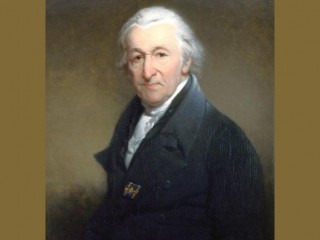
Martinus Van Marum biography
Date of birth : 1750-03-20
Date of death : 1837-12-26
Birthplace : Delft, The Netherlands
Nationality : Dutch
Category : Science and Technology
Last modified : 2010-06-01
Credited as : Chemist, Leien jar, Electrostatic machine
0 votes so far
Martinus van Marum was active in many areas of science, but he is the best known for his electrostatic machines and the discovery of ozone produced by electrical sparks in air.
Dutch chemist Martinus van Marum was born on March 20, 1750, in Delft, The Netherlands. He received his undergraduate education in Groningen and then he received his doctoral degree in medicine in 1773. From 1776 till 1780 he was active as a physician in Haarlem.
He became famous for his demonstrations of the Leiden jar with his electricity machine while curator for the Teylers Museum.
From about 1790 to 1808 Van Marum was an active member of the Society of Dutch Chemists and served as Secretary of the Dutch Society of Sciences from 1804 to 1837. He taught in the society and was a member of the physical, astronomical collegium. Martinus van Marum was also Director of the Cabinet of the Natural History of the Dutch Society of the Sciences, the librarian of Teyler’s museum and correspondent of the Royal Academy of the Sciences of Paris.
Martinus Van Marum was a Dutch scientific dignitary of this time who straddled most of the branches of science with a series of observations and experiments. He is also interesting because he changed his mind about Stahl’s theory of phlogiston after a visit to Paris and meeting Lavoisier. He gradually abandoned the Phlogistic theory in favor of oxygenation. This marks a great man. He combined the wonderful characteristics of being both a great researcher and having an open mind. This combination is a rarity amongst scientist of his day, as well as ours.
He dealt with plant breeding, with the problems of the air pollution and the ventilation of factory buildings, the production of cheap food for levers, with the handling of Cholera and with the lightning conductors. In 1796 von Marum studied the dehydrogenation of alcohols using metals that was the earliest study of heterogeneous catalysis. He also studied gases (including nitrous oxide) and published about 35 papers based on his research. Schemes of various chemical apparatuses typical for that time can be found in his papers and books.
However, his the most important scientific contributions were related to electrical studies and construction of electrostatic machines. In 1784 Martinus Van Marum made an electrostatic friction machine shown below.
In 1784 Van Marum designed the then-largest electrostatic generator in the 1700s. Built by an English instrument maker in Amsterdam, the machine consisted of two parallel rotating glass discs, each 65 in. in diameter mounted 7.5 in. apart on a single yard-long axle. Compound cranks rotated the discs, with positions for two operators working simultaneously. With the machine, van Marum drew 2-ft-long sparks that affected an electrometer 40 ft away from the machine. This electrostatic machine allowed him to produce arcs of 60 cm long. The machine was attached to a battery of 135 Leyden jars.
A hundred discharges from the generator charged the battery to such an extent that sparks flew over the side of the jars. He also conducted tests on the fusion of metal wires as well as the effect of battery discharge on different metals and alloys. From these experiments, van Marum concluded that copper was the best material for lightning conductors and lead the worst. With the machine, van Marum also observed spark branchings between the massive electrodes and related their direction to the charge (positive or negative) of the electrode. He concluded from his experiments with electricity that the static and the galvanic forms of electricity are equal and have the same origin. Van Marum used static electricity in experiments which he conducted in the fields of chemistry, magnetism and medicine.
In 1785, Martinus Van Marum, subjecting oxygen to electrical discharges, noted “the odor of electrical matter” and the accelerated oxidation of mercury. Thus, van Marum reported the odor of ozone but he failed to identify it as an unique form of oxygen. Martinus Van Marum made many scientific instruments and apparatuses for other people. For instance, George II needed a wide range of instruments including optical, surveying, navigational, astronomical, meteorological, hydraulic, mechanical, electrical, magnetic and pneumatic instruments as well as instruments for drawing. He supplied a large order to Martinus van Marum of Haarlem in Holland.
After the Netherlands were occupied by France in 1795 (as a result of the French revolution and the following war), Martinus Van Marum concentrated his research in paleontology and geology. Among other things he bought the skeleton of the Mosasauriers found with Limburg.
Martinus Van Marum died on December 26, 1837, in Haarlem.
Medal memorizing Martinus Van Marum and his contribution to chemistry.
















